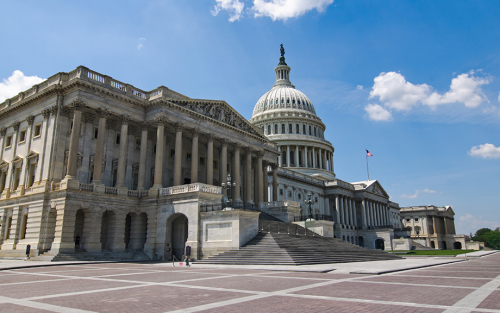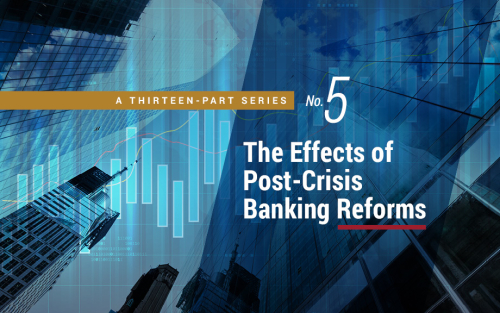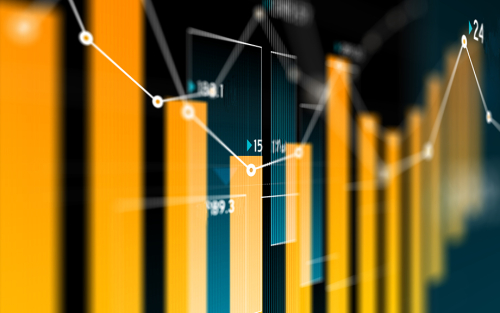Just Released: The New York Fed Staff Forecast—April 2019
David Lucca, Jonathan McCarthy, and Richard Peach Today, the Federal Reserve Bank of New York is hosting the spring meeting of its Economic Advisory Panel (EAP). As has become the custom at this meeting, the New York Fed Research staff is presenting its forecast for U.S. growth, inflation, and the unemployment rate. Following the presentation, […]
The New York Fed DSGE Model Forecast—January 2019
This post presents an update of the economic forecasts generated by the Federal Reserve Bank of New York’s dynamic stochastic general equilibrium (DSGE) model. We describe very briefly our forecast and its change since October 2018. As usual, we wish to remind our readers that the DSGE model forecast is not an official New York Fed forecast, but only an input to the Research staff’s overall forecasting process. For more information about the model and variables discussed here, see our DSGE model Q & A.
Monitoring Economic Conditions during a Government Shutdown

The recent partial shutdown of the federal government has disrupted publication schedules for many U.S. Census Bureau and Bureau of Economic Analysis (BEA) data releases. Most notably, the release of GDP for the fourth quarter of 2018—originally scheduled for January 30—has been postponed indefinitely.
The New York Fed DSGE Model Forecast—October 2018
This post presents an update of the economic forecasts generated by the Federal Reserve Bank of New York’s dynamic stochastic general equilibrium (DSGE) model. We describe very briefly our forecast and its change since July 2018. As usual, we wish to remind our readers that the DSGE model forecast is not an official New York Fed forecast, but only an input to the Research staff’s overall forecasting process. For more information about the model and variables discussed here, see our DSGE model Q & A.
Changing Risk‑Return Profiles

Are stock returns predictable? This question is a perennially popular subject of debate. In this post, we highlight some results from our recent working paper, where we investigate the matter. Rather than focusing on a single object like the forecasted mean or median, we look at the entire distribution of stock returns and find that the realized volatility of stock returns, especially financial sector stock returns, has strong predictive content for the future distribution of stock returns. This is a robust feature of the data since all of our results are obtained with real-time analyses using stock return data since the 1920s. Motivated by this result, we then evaluate whether the banking system appears healthier today, and if recent regulatory reforms have helped.
Opening the Toolbox: The Nowcasting Code on GitHub

In April 2016, we unveiled—and began publishing weekly—the New York Fed Staff Nowcast, an estimate of GDP growth using an automated platform for tracking economic conditions in real time. Today we go a step further by publishing the MATLAB code for the nowcasting model, available here on GitHub, a public repository hosting service.
The New York Fed DSGE Model Forecast–July 2018
This post presents an update of the economic forecasts generated by the Federal Reserve Bank of New York’s dynamic stochastic general equilibrium (DSGE) model. We describe very briefly our forecast and its change since March 2018. As usual, we wish to remind our readers that the DSGE model forecast is not an official New York Fed forecast, but only an input to the Research staff’s overall forecasting process. For more information about the model and variables discussed here, see our DSGE model Q & A.
Economic Predictions with Big Data: The Illusion of Sparsity

The availability of large data sets, combined with advances in the fields of statistics, machine learning, and econometrics, have generated interest in forecasting models that include many possible predictive variables. Are economic data sufficiently informative to warrant selecting a handful of the most useful predictors from this larger pool of variables? This post documents that they usually are not, based on applications in macroeconomics, microeconomics, and finance.
Forecasts of the Lost Recovery
The years following the Great Recession were challenging for forecasters for a variety of reasons, including an unprecedented policy environment. This post, based on our recently released working paper, documents the real-time forecasting performance of the New York Fed dynamic stochastic general equilibrium (DSGE) model in the wake of the Great Recession. We show that the model’s predictive accuracy was on par with that of private forecasters and proved to be quite a bit better, at least in terms of GDP growth, than that of the median forecasts from the Federal Open Market Committee’s (FOMC) Summary of Economic Projections (SEP).
Just Released: The New York Fed Staff Forecast—April 2018
Today, the Federal Reserve Bank of New York is hosting the spring meeting of its Economic Advisory Panel (EAP). As has become the custom at this meeting, the New York Fed’s Research staff is presenting its forecast for U.S. growth, inflation, and the unemployment rate. Following the presentation, members of the EAP, which consists of leading economists in academia and the private sector, are asked to critique the staff forecast. Such feedback helps the staff evaluate the assumptions and reasoning underlying its forecast as well as the forecast’s key risks. The feedback is also an important part of the forecasting process because it informs the staff’s discussions with New York Fed President William Dudley about economic conditions.










 RSS Feed
RSS Feed Follow Liberty Street Economics
Follow Liberty Street Economics